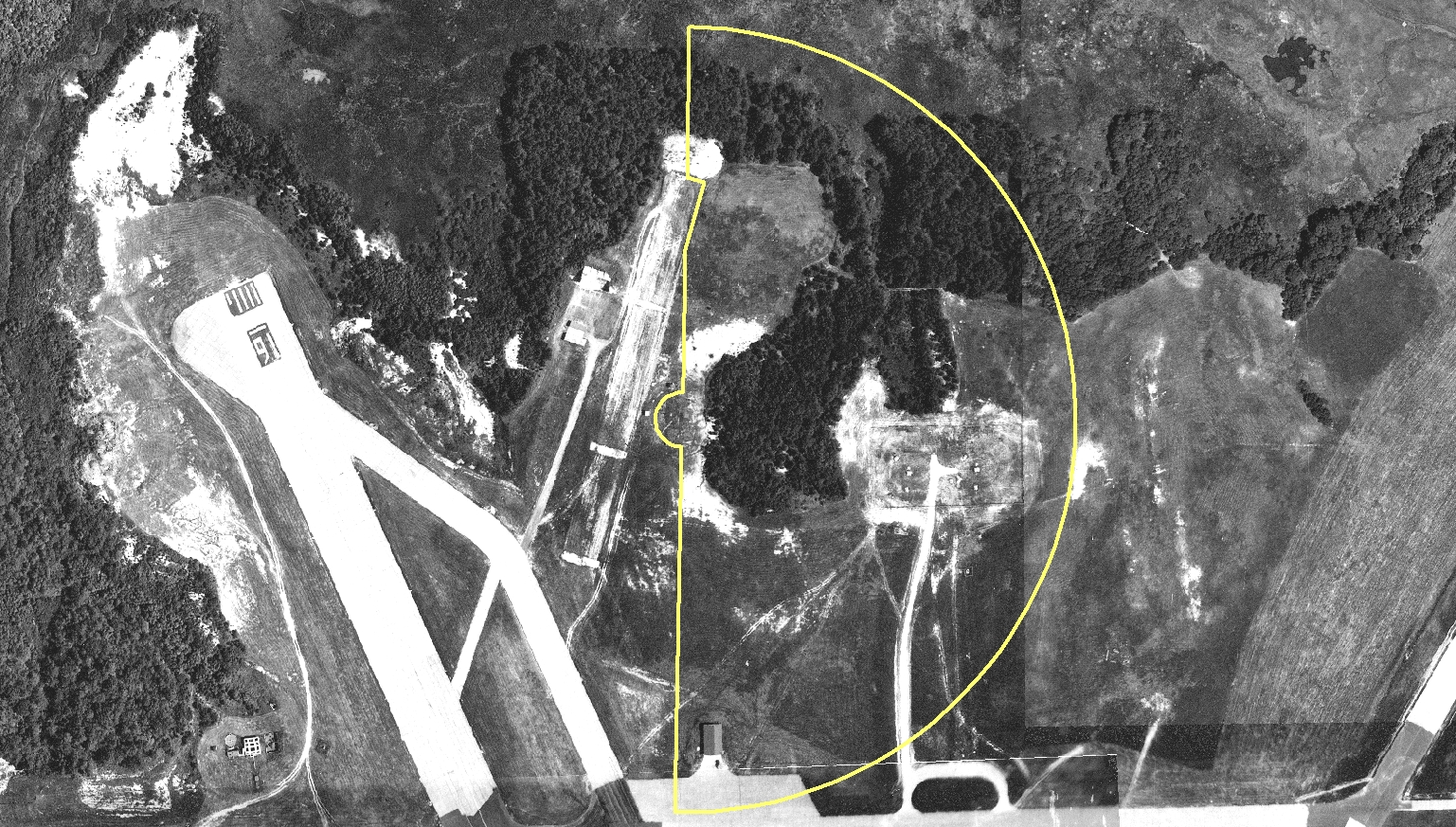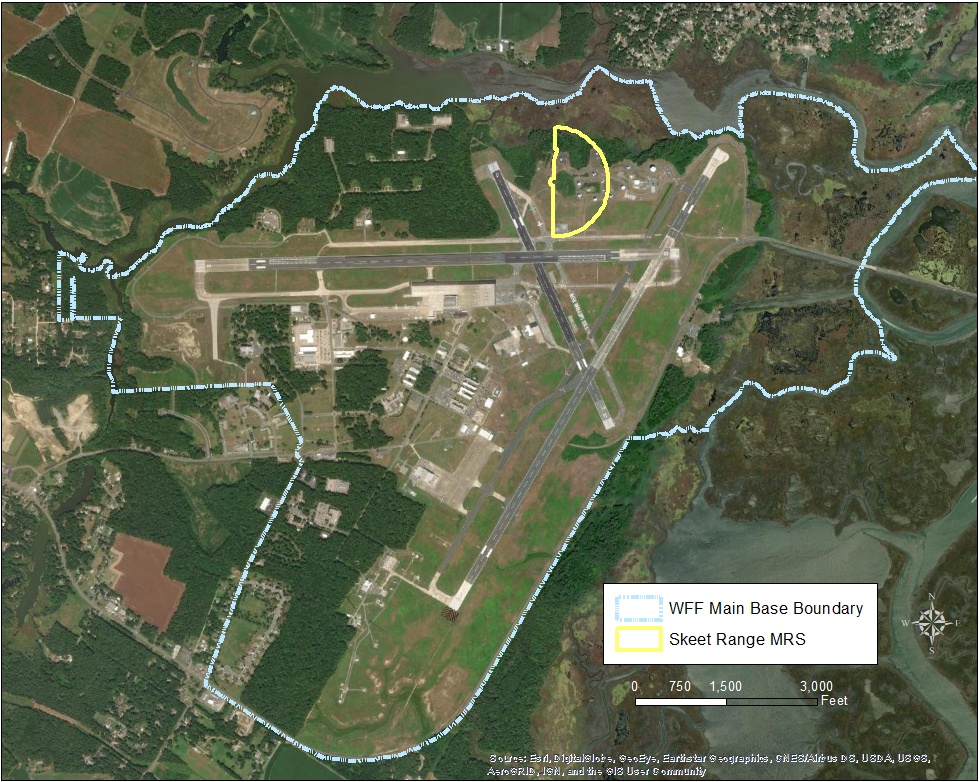Operable Unit 08
Background
The Formerly Used Defense Site (FUDS) Project 9, Skeet Range Munitions Response Site (MRS), also known as Operable Unit 08, Skeet Range, is part of the larger former Main Base Firing Range Complex. The Main Base Firing Range Complex also included a rifle range, aircraft gun testing range, and pistol range. NASA began investigating the Main Base Firing Range Complex under NASAs Environmental Compliance and Restoration Program in 2007. NASA completed cleanup activities at the Rifle, Aircraft Gun Testing, and Pistol Ranges and closed these sites with a No Further Action Decision in 2017. The Skeet Range portion was initially included in the investigation but later transferred to the FUDS Program for investigation by the U.S. Army Corps of Engineers (USACE). USACE transferred the Skeet Range back to NASA in accordance with the 2015 Memorandum of Agreement between NASA and the Department of Army.
History of the Skeet Range Site
The Department of Defense established the Chincoteague Naval Auxiliary Air Station in 1943 at the current Main Base portion of NASA's Wallops Flight Facility (WFF) as a training facility for World War II naval aviators. The Navy built three runways, several buildings, and supporting infrastructure in the early 1940s.
The Navy constructed the first skeet range, called either the Shotgun Range or High Tower Range, in 1944, with a northeasterly direction of fire. The Navy reconfigured the High Tower Range between 1945 and 1948 with an easterly direction of fire. These configurations make up the Skeet Range. The east-facing skeet range overlapped most of the High Tower Range and the remaining areas of the former Main Base Firing Range Complex.
The Main Base Firing Range Complex encompassed 40 acres and included the former Rifle, Aircraft Gun Testing, Pistol, and Skeet Ranges. The Navy constructed the Aircraft Gun Testing Range in 1944 following the completion of the runways. The Navy converted the Aircraft Gun Testing Range into the Pistol Range in 1948. The Navy constructed the Rifle Range in 1951 adjacent to the Pistol Range.
NASA completed a non-time-critical removal action at the Main Base Firing Range Complex in 2016. The Construction Completion Report documented No Further Action is required at the former Pistol, Rifle, Aircraft Gun Testing Ranges in 2017. USACE managed investigations at the Skeet Range until 2015, when NASA and the Department of the Army signed a Memorandum of Agreement (MOA) authorizing NASA to manage the FUDS program at WFF on behalf of USACE.

|
Skeet Range Site Today
The Skeet Range site is located in the northern portion of the WFF Main Base, north of the Runway 10-28 and Runway 17-35 intersection and bordering the National Oceanic and Atmospheric Administration (NOAA) to the east. The buildings and shooting stations associated with the Skeet Range and former Main Base Firing Range Complex no longer exist. The area generally consists of open grasslands, deciduous scrub, and a drainage swale. NOAA's Wallops Command and Data Acquisition Station encompasses a portion of the Skeet Range.
|
|
The investigation area of the Skeet Range consists of the High Tower Range with a 500-foot safety fan and the east-facing skeet range with a 900-foot safety fan, estimated to be 29.4 acres. The primary contaminants generated by historic range operations include lead shot, lead, and polycyclic aromatic hydrocarbons (PAHs) from clay pigeons. The safety fan represents the fallout zone of lead shot fired at the clay pigeons. Lead shot is of particular interest since it is of similar size to the grit ingested by certain bird species.
|
|
Previous Investigations
Site Investigation – In 2007, NASA completed a Site Investigation at the Main Base Firing Range Complex to characterize surface soil and shallow groundwater conditions.
Site Inspection – In 2010, the USACE conducted a desktop Site Inspection, which included records research, munitions and explosives of concern evaluations, and munitions constituents evaluations. The report recommended a Remedial Investigation.
Remedial Investigation – In 2018 through 2019, NASA completed a Remedial Investigation at the Skeet Range to delineate the extent of contaminated surface soils, investigate the subsurface soils, develop preliminary remediation goals, and evaluate risk to human health and ecological receptors.
Feasibility Study – NASA completed a Feasibility Study in 2021, which evaluated potential remedial alternatives for the Skeet Range. The three remedial alternatives developed for the site included, Alternative 1 – No Action, Alternative 2 – Excavation and Off-Site Disposal, and Alternative 3 – Excavation, On-Site Consolidation, Soil Cover, Operation and Maintenance, and Land Use Controls.
Proposed Plan
In 2023, NASA completed the Proposed Plan which identified Soil and Sediment Removal and Off-Site Disposal as the preferred alternative for the protection of human and ecological receptors at the site.
For any questions regarding Operable Unit 08, please contact:
Kristi Francisco
Restoration Program Manager
NASA Wallops Flight Facility
Mailstop: 250.W
Wallops Island, VA 23337
kristi.l.francisco@nasa.gov
(757) 824-6704





